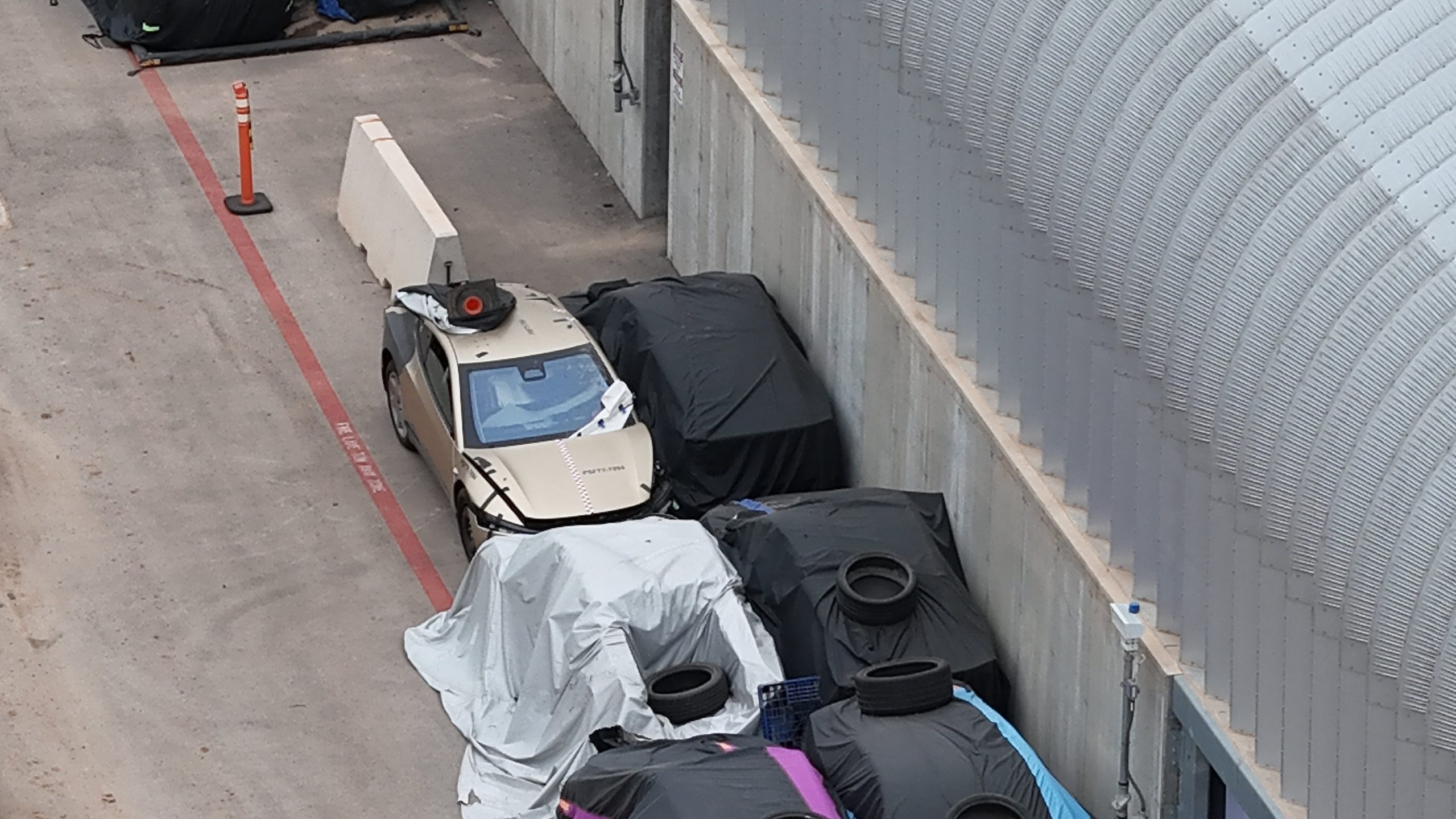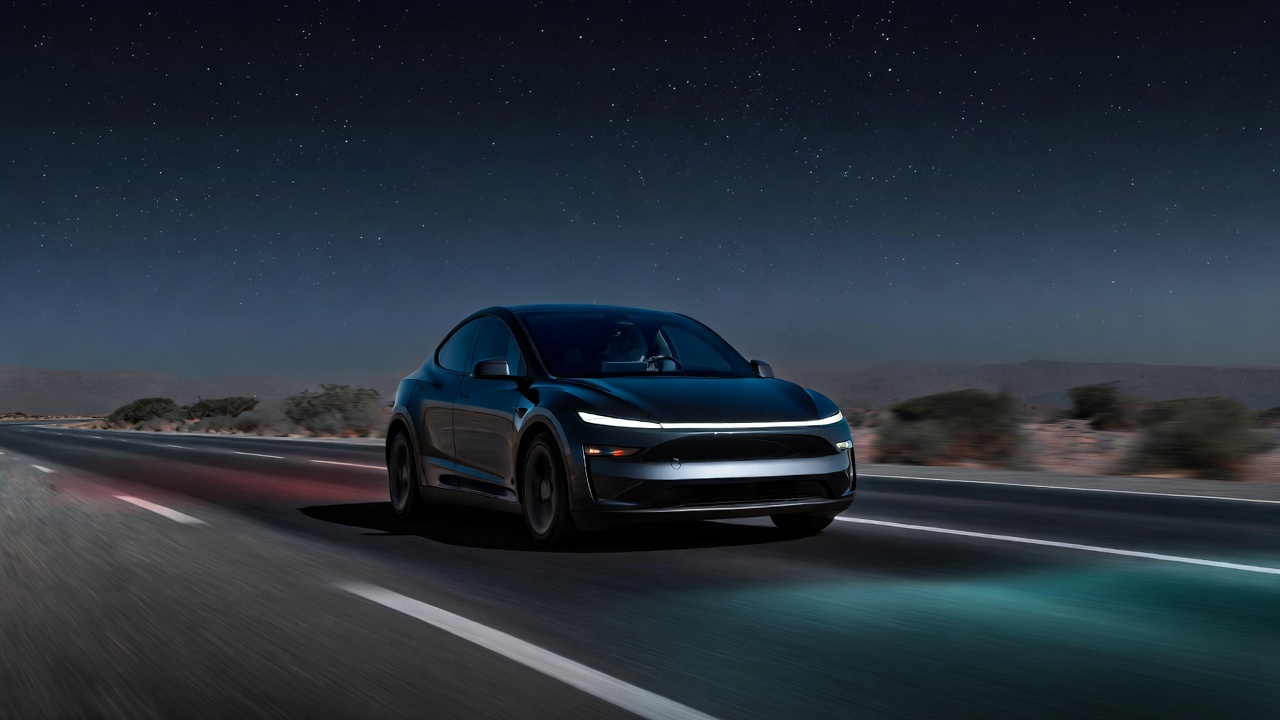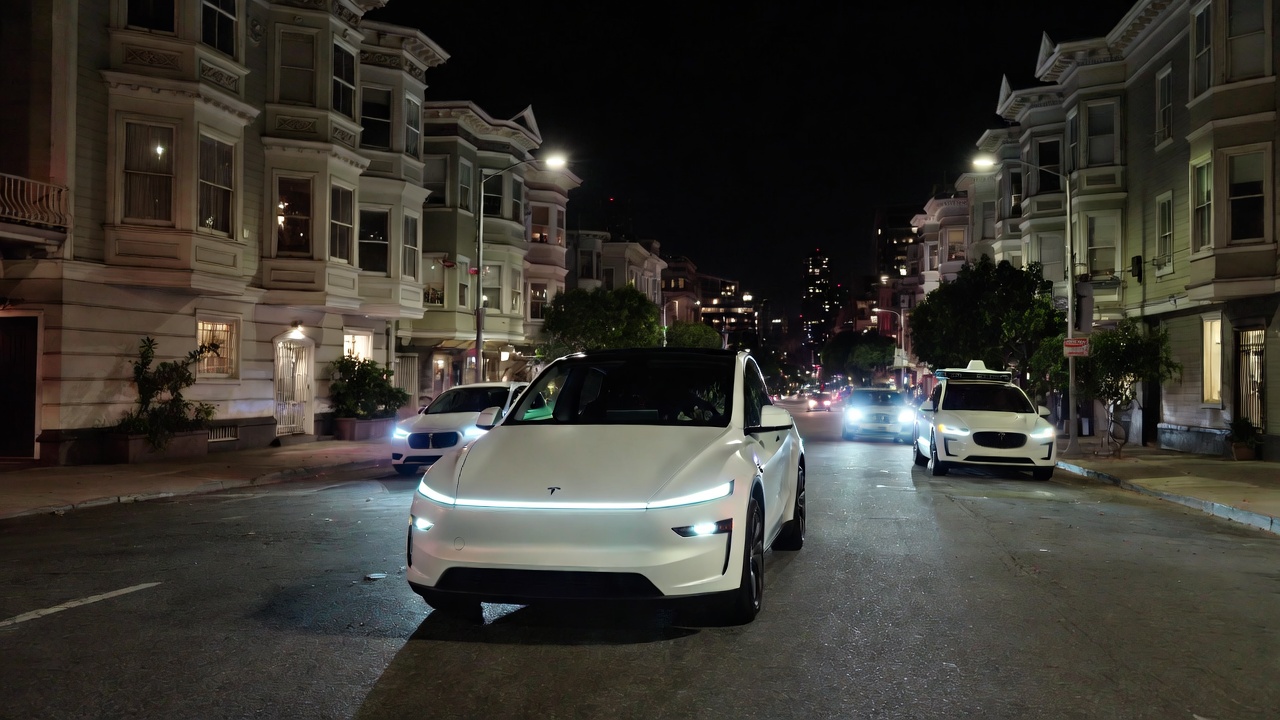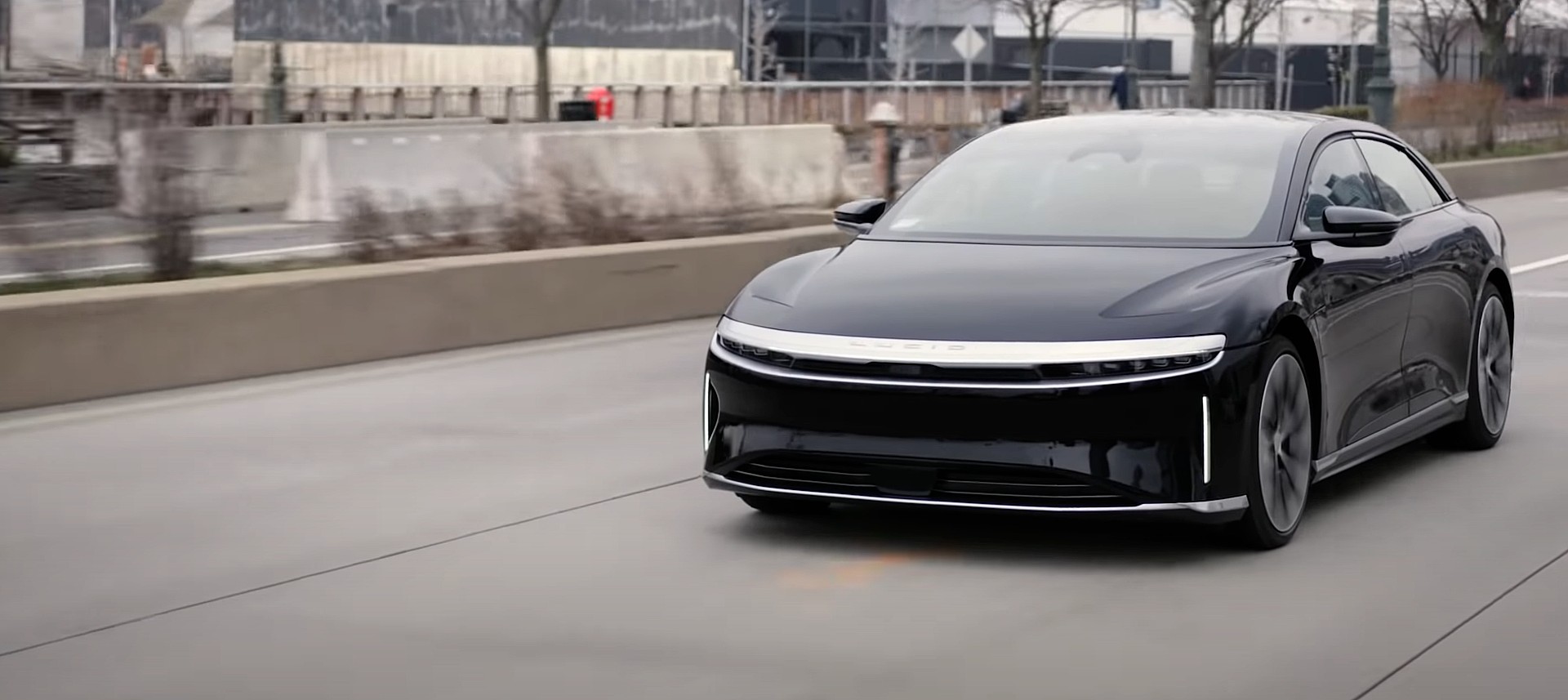Lucid Motors’ introductory all-electric vehicle, the Air, is primed for imminent release that is set to occur later this year. Until then, Lucid is refining the details that set the Air apart from its competitors, and its CEO Peter Rawlinson is also getting his hands dirty. Recently, he took the Air to Manhattan in New York City to test the vehicle’s performance in sleek, slender, and challenging urban settings. One thing is for sure, this luxury sedan from Lucid is set to be a disruptive force in the electric sector as it packs performance with comfortability in all the right ways. Rawlinson was sure to complement his company’s first production EV, but he also was vocal about some minor changes he’d like to see ahead of its initial deliveries.
Rawlinson started his trip through Manhattan on a stroll that took him down the Hudson River to the Financial District. After getting perfect views of One World Trade Center and lower Manhattan, Rawlinson continued his trek through the City that Never Sleeps, highlighting several changes that the Lucid team made to the Air’s design. Everything from pillars that created blind spots to the quality of the instrument panel buttons was broken down by Rawlinson, who has held a high standard for his company’s vehicles ever since they have been introduced prior to their production.
An all-too-common narrative that has been projected among the EV community is that of what company will change the game once again. While Tesla technically introduced the electric vehicle sector to the average car buyer, other companies are coming in to create competition and innovation. Lucid is just one of many, but their approach to the electric car is completely different from its competitors. While many are looking years into the future and how the “big picture” of the automotive industry is inevitably set for a massive change in the coming years, Lucid is focused on the short-term.
Rawlinson’s goal is to begin putting cars on the road as soon as possible, and it begins with ending the narrative that Lucid has accomplished something when it hasn’t yet delivered a car. “We are nothing until we’ve got anything into production,” Rawlinson once said, highlighting his inkling for a vehicle delivery by the end of 2021.
The hands-on approach that Rawlinson has taken is eerily similar to that of his former boss Elon Musk. The two worked together in the early 2010s while the development of the Model S was underway. Small, contested, and stressful car startups are becoming more frequent, and Rawlinson has already done this once before. It takes attention to detail from a crafty automotive veteran to ensure that things go smoothly, and Rawlinson may be the perfect man for the job. While he could be sitting in his ritzy office in California, he is instead taking his company’s first car and navigating it through some of the world’s busiest streets, working on perfecting the Lucid Air months before it begins arriving to customers.
Lucid’s premier Air Dream Edition will begin deliveries later this year. While the company will build 500 Air Dream Edition variants, it has three other configurations that will be available in the coming months. Ultimately, Lucid’s big plan is relatable to Tesla’s Master Plan: build an expensive luxury vehicle, and use the funds from that to develop new, affordable, all-electric powertrains in the coming years.
Watch Lucid CEO and CTO Peter Rawlinson take the Lucid Air through the streets of Manhattan below.

News
Tesla is not sparing any expense in ensuring the Cybercab is safe
Images shared by the longtime watcher showed 16 Cybercab prototypes parked near Giga Texas’ dedicated crash test facility.

The Tesla Cybercab could very well be the safest taxi on the road when it is released and deployed for public use. This was, at least, hinted at by the intensive safety tests that Tesla seems to be putting the autonomous two-seater through at its Giga Texas crash test facility.
Intensive crash tests
As per recent images from longtime Giga Texas watcher and drone operator Joe Tegtmeyer, Tesla seems to be very busy crash testing Cybercab units. Images shared by the longtime watcher showed 16 Cybercab prototypes parked near Giga Texas’ dedicated crash test facility just before the holidays.
Tegtmeyer’s aerial photos showed the prototypes clustered outside the factory’s testing building. Some uncovered Cybercabs showed notable damage and one even had its airbags engaged. With Cybercab production expected to start in about 130 days, it appears that Tesla is very busy ensuring that its autonomous two-seater ends up becoming the safest taxi on public roads.
Prioritizing safety
With no human driver controls, the Cybercab demands exceptional active and passive safety systems to protect occupants in any scenario. Considering Tesla’s reputation, it is then understandable that the company seems to be sparing no expense in ensuring that the Cybercab is as safe as possible.
Tesla’s focus on safety was recently highlighted when the Cybertruck achieved a Top Safety Pick+ rating from the Insurance Institute for Highway Safety (IIHS). This was a notable victory for the Cybertruck as critics have long claimed that the vehicle will be one of, if not the, most unsafe truck on the road due to its appearance. The vehicle’s Top Safety Pick+ rating, if any, simply proved that Tesla never neglects to make its cars as safe as possible, and that definitely includes the Cybercab.
Elon Musk
Tesla’s Elon Musk gives timeframe for FSD’s release in UAE
Provided that Musk’s timeframe proves accurate, FSD would be able to start saturating the Middle East, starting with the UAE, next year.

Tesla CEO Elon Musk stated on Monday that Full Self-Driving (Supervised) could launch in the United Arab Emirates (UAE) as soon as January 2026.
Provided that Musk’s timeframe proves accurate, FSD would be able to start saturating the Middle East, starting with the UAE, next year.
Musk’s estimate
In a post on X, UAE-based political analyst Ahmed Sharif Al Amiri asked Musk when FSD would arrive in the country, quoting an earlier post where the CEO encouraged users to try out FSD for themselves. Musk responded directly to the analyst’s inquiry.
“Hopefully, next month,” Musk wrote. The exchange attracted a lot of attention, with numerous X users sharing their excitement at the idea of FSD being brought to a new country. FSD (Supervised), after all, would likely allow hands-off highway driving, urban navigation, and parking under driver oversight in traffic-heavy cities such as Dubai and Abu Dhabi.
Musk’s comments about FSD’s arrival in the UAE were posted following his visit to the Middle Eastern country. Over the weekend, images were shared online of Musk meeting with UAE Defense Minister, Deputy Prime Minister, and Dubai Crown Prince HH Sheikh Hamdan bin Mohammed. Musk also posted a supportive message about the country, posting “UAE rocks!” on X.
FSD recognition
FSD has been getting quite a lot of support from foreign media outlets. FSD (Supervised) earned high marks from Germany’s largest car magazine, Auto Bild, during a test in Berlin’s challenging urban environment. The demonstration highlighted the system’s ability to handle dense traffic, construction sites, pedestrian crossings, and narrow streets with smooth, confident decision-making.
Journalist Robin Hornig was particularly struck by FSD’s superior perception and tireless attention, stating: “Tesla FSD Supervised sees more than I do. It doesn’t get distracted and never gets tired. I like to think I’m a good driver, but I can’t match this system’s all-around vision. It’s at its best when both work together: my experience and the Tesla’s constant attention.” Only one intervention was needed when the system misread a route, showcasing its maturity while relying on vision-only sensors and over-the-air learning.
News
Tesla quietly flexes FSD’s reliability amid Waymo blackout in San Francisco
“Tesla Robotaxis were unaffected by the SF power outage,” Musk wrote in his post.

Tesla highlighted its Full Self-Driving (Supervised) system’s robustness this week by sharing dashcam footage of a vehicle in FSD navigating pitch-black San Francisco streets during the city’s widespread power outage.
While Waymo’s robotaxis stalled and caused traffic jams, Tesla’s vision-only approach kept operating seamlessly without remote intervention. Elon Musk amplified the clip, highlighting the contrast between the two systems.
Tesla FSD handles total darkness
The @Tesla_AI account posted a video from a Model Y operating on FSD during San Francisco’s blackout. As could be seen in the video, streetlights, traffic signals, and surrounding illumination were completely out, but the vehicle drove confidently and cautiously, just like a proficient human driver.
Musk reposted the clip, adding context to reports of Waymo vehicles struggling in the same conditions. “Tesla Robotaxis were unaffected by the SF power outage,” Musk wrote in his post.
Musk and the Tesla AI team’s posts highlight the idea that FSD operates a lot like any experienced human driver. Since the system does not rely on a variety of sensors and a complicated symphony of factors, vehicles could technically navigate challenging circumstances as they emerge. This definitely seemed to be the case in San Francisco.
Waymo’s blackout struggles
Waymo faced scrutiny after multiple self-driving Jaguar I-PACE taxis stopped functioning during the blackout, blocking lanes, causing traffic jams, and requiring manual retrieval. Videos shared during the power outage showed fleets of Waymo vehicles just stopping in the middle of the road, seemingly confused about what to do when the lights go out.
In a comment, Waymo stated that its vehicles treat nonfunctional signals as four-way stops, but “the sheer scale of the outage led to instances where vehicles remained stationary longer than usual to confirm the state of the affected intersections. This contributed to traffic friction during the height of the congestion.”
A company spokesperson also shared some thoughts about the incidents. “Yesterday’s power outage was a widespread event that caused gridlock across San Francisco, with non-functioning traffic signals and transit disruptions. While the failure of the utility infrastructure was significant, we are committed to ensuring our technology adjusts to traffic flow during such events,” the Waymo spokesperson stated, adding that it is “focused on rapidly integrating the lessons learned from this event, and are committed to earning and maintaining the trust of the communities we serve every day.”










